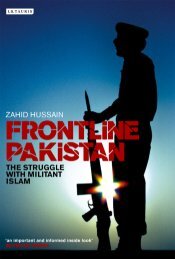Who Owns Pakistan - Yimg
Who Owns Pakistan - Yimg
Who Owns Pakistan - Yimg
You also want an ePaper? Increase the reach of your titles
YUMPU automatically turns print PDFs into web optimized ePapers that Google loves.
Since most of my work as an economic reporter was limited to covering the<br />
government policies in Islamabad, my knowledge of the corporate sector and big<br />
business was rudimentary. My first job, thus, was to identify companies by<br />
groups. It took two years to identify the major groups and their companies. I<br />
found out that several of the proverbial rich groups were not rich anymore and<br />
had moved abroad, became extinct or grown small through divisions and<br />
subdivisions.<br />
Bitten by Bhutto's nationalization and furor over the concentration of wealth, the<br />
proverbial 22 families started covering their tracks in the 1970's, arranging their<br />
eggs in different baskets, digging-in, dispersing and making it difficult to identify<br />
them. However, if there is a will there is a way.<br />
I read thousands of corporate reports of companies listed on Karachi Stock<br />
Exchange and company reviews in newspapers. Courtasey Shaikh Ikram ul haq<br />
of the Daily, Buisiness Recorder of Karachi, I scanned the newspaper files for the<br />
last ten years. I had hardly started arranging the book in my mind when Nawaz<br />
Sharif started on the collision course with Presidant Ishaq. Sands of time started<br />
running out for his government.<br />
Nawaz Sharif's exit from power came in August 1993 and, unfortunately, for my<br />
book. By the time I had not yet started writing the book. It was only in January<br />
1994 that I sat down at my computer and slugged my first chapter, under the file<br />
BBR (Bismallah Al Rehman Arahim), an abbreviation borrowed from BBR,<br />
Modaraba of the Dawood group. I sat out to identify and rank the super rich in<br />
<strong>Pakistan</strong>, trace their origin, chart their growth and find out how at least some of<br />
them became overly riched overnight. But book in the reader's hands is not<br />
simply about the wealth of the 22 families or their indictment for accumulating it<br />
dubiously.<br />
Z A Bhutto demolished monopolies and Nawaz Sharif attempted to reincarnate<br />
them. And although what each professed and did was the need of the hour, both<br />
became the victims of haste. One nationalized and the other privatised.<br />
Nationalisation retarded <strong>Pakistan</strong>'s growth in many ways but its worst<br />
consequence was the scars inflicted on the psyche of the big business,<br />
evergreen even two decades after the nationalization. It alienated the<br />
industarialilst from the economic mainstream and, as if by a collective decision,<br />
several of the original 22 families who poineered development in <strong>Pakistan</strong><br />
switched off investment in long gestation projects. The <strong>Pakistan</strong>i businessmen<br />
who were planing mega projects in 1971 and are still capable of setting up mega<br />
projects resigned to remain spinners, sugar manufacturers or best at best<br />
cement manufacturers. The reservation on the part of the people who had the<br />
surplus capital and the know-how to lead the country to a take-off stage<br />
remained to date the single biggest factor holding up the flowering of country's<br />
full economic potential.<br />
6













